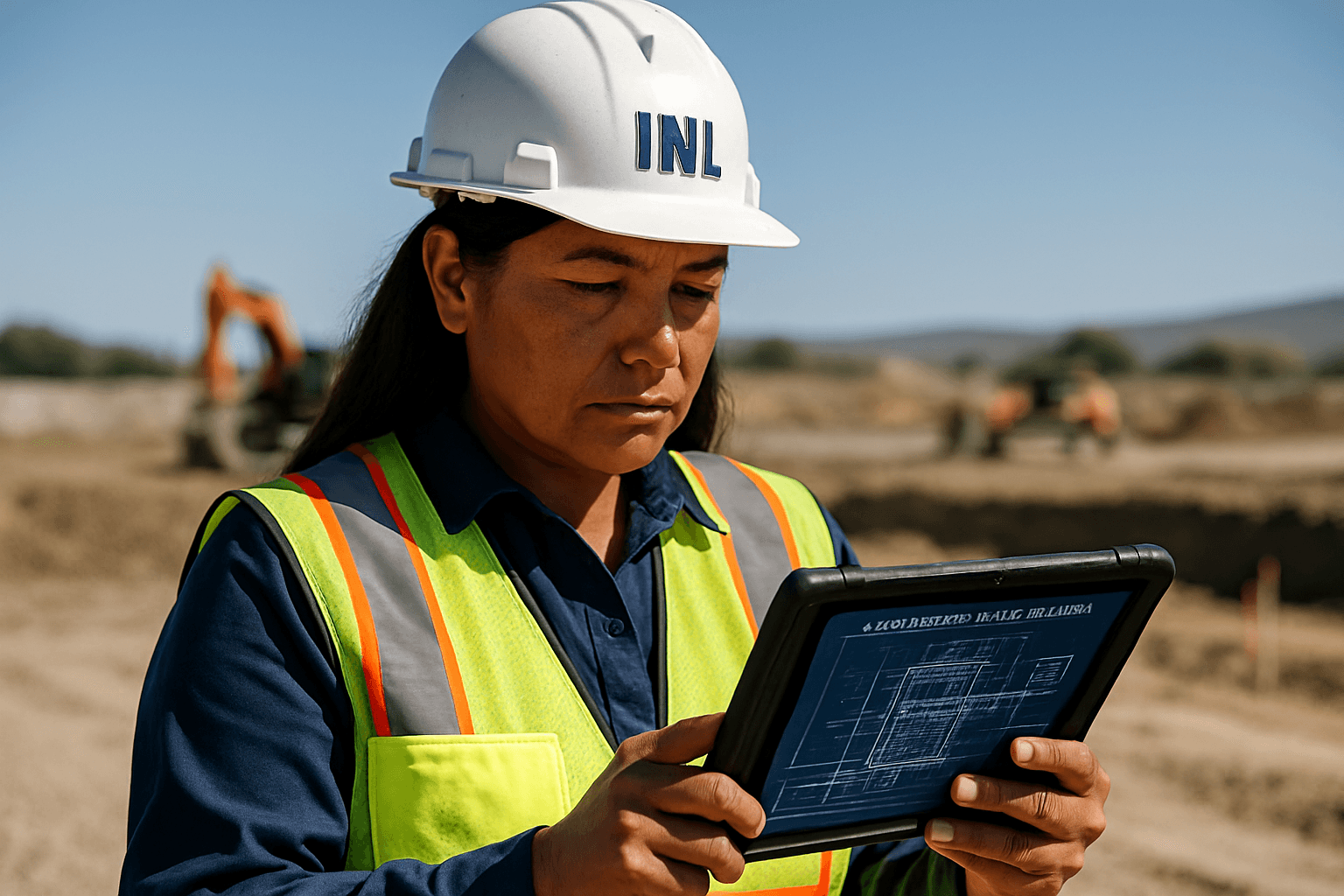IDAHO FALLS, Idaho – August 29, 2025 – The United States has officially commenced construction on its first experimental extra modular nuclear reactor (XMR), Aalo-X, at the Idaho National Laboratory (INL). The groundbreaking ceremony, held on Thursday, August 28, marks a significant step in the nation’s efforts to accelerate advanced nuclear energy deployment and meet burgeoning energy demands.
The Aalo-X project, spearheaded by Austin-based Aalo Atomics in collaboration with INL, is an experimental reactor aiming for operational status by July 4, 2026. This initiative is part of President Trump’s Nuclear Reactor Pilot Program, designed to fast-track the testing and commercialization of advanced reactor designs.
A New Era of Nuclear Innovation: Aalo-X and Research Reactors
The Aalo-X experimental reactor is designed as a precursor to Aalo Atomics’ commercial Aalo Pod, a 50 MWe XMR power plant specifically developed to power modern AI data centers. Manufactured at Aalo’s pilot factory in Austin, Texas, the reactor will be transported and installed at the INL’s Materials and Fuels Complex. This project underscores a renewed focus on nuclear innovation, with INL Director John Wagner stating it “paves the way toward this new nuclear age where we will see a lot of growth in clean nuclear power.”
In a related development, Abilene Christian University (ACU) also received a construction permit from the U.S. Nuclear Regulatory Commission (NRC) on September 16, 2024, to build a small modular reactor (SMR) on its campus in Abilene, Texas. This marks the first research reactor project approved for construction in the U.S. in decades, highlighting a broader trend of exploring advanced reactor technologies for various applications.
Understanding Small Modular and Extra Modular Reactors
Small Modular Reactors (SMRs) and Extra Modular Reactors (XMRs) represent a new generation of nuclear power technology. Unlike traditional large-scale nuclear plants, SMRs are smaller, simpler, and can be factory-fabricated before being transported to a site for assembly. This modular approach aims to reduce construction times and costs, enhance safety, and offer greater flexibility in deployment. They are designed to generate electricity, provide process heat for industrial uses, or support other applications like desalination. XMRs, such as Aalo Atomics’ design, are a subcategory, often even smaller and designed for specific applications like powering data centers.
Key Projects Driving US SMR Development
While Aalo-X represents an experimental build, several other projects across the United States are progressing towards commercial deployment of advanced modular reactors:
Dow and X-energy’s Industrial SMR Project
Dow and X-energy Reactor Company have submitted a construction permit application to the NRC for a proposed advanced nuclear project at Dow’s manufacturing site in Seadrift, Texas. This project, supported by the U.S. Department of Energy’s (DOE) Advanced Reactor Demonstration Program (ARDP), aims to deploy four Xe-100 high-temperature gas-cooled reactors (HTGR) to provide clean power and industrial steam, significantly reducing emissions. If approved, construction could begin at the end of this decade, with the goal of being operational by the early 2030s, replacing aging natural gas-fired equipment.
NuScale Power’s Certified Designs
NuScale Power has been a frontrunner in SMR design, with its VOYGR power plant (using 50 MWe modules) becoming the first SMR to receive design certification from the NRC in 2022. More recently, in May 2025, the NRC approved NuScale’s uprated 77 MWe reactor design (VOYGR-4 and VOYGR-6), marking the second SMR design cleared for use in the U.S. Although an initial deployment project in Idaho, the Carbon Free Power Project, was canceled in 2023 due to cost increases, NuScale is actively pursuing other domestic and international opportunities, including exploring partnerships with tech companies for data centers.
Holtec International in Michigan
Michigan could potentially host two of the nation’s first commercial SMRs, with Holtec International planning to build its SMR-300s at the Palisades nuclear plant site in Covert Township. These reactors, each capable of producing 300 megawatts, are projected to begin operations by 2030, pending NRC approval. Holtec’s design emphasizes safety features, including underground placement of reactors and spent fuel canisters.
Kairos Power and TVA’s Advanced Reactor Partnership
Kairos Power and the Tennessee Valley Authority (TVA) announced in August 2025 a power purchase agreement for Kairos Power’s Hermes 2 Plant in Oak Ridge, Tennessee. This advanced Generation IV reactor is scheduled to begin operations in 2030 and represents the first purchase of electricity from an advanced Gen IV reactor by a U.S. utility. Google is set to procure clean energy attributes from this plant to power its data centers in the region.
Advantages and Challenges of Modular Nuclear Technology
The push for modular nuclear reactors is driven by several potential advantages:
- Reduced Costs and Construction Times: Factory fabrication and smaller size can lead to lower capital costs and faster deployment compared to conventional nuclear plants.
- Enhanced Safety: Many SMR designs incorporate passive safety features, relying on natural processes like convection and gravity for cooling, which can reduce the need for active intervention or backup power.
- Flexible Deployment: SMRs can be sited in more diverse locations, including remote communities or industrial sites, and can scale output by adding modules as needed.
- Decarbonization: They offer a reliable, carbon-free power source, critical for industries and regions seeking to reduce greenhouse gas emissions.
However, challenges remain, including the need to build out supply chains for mass production, manage “optimistic” cost estimates, and address concerns regarding safety, security, and the unresolved issue of nuclear waste storage.
The recent groundbreaking at INL and the ongoing progress of other projects signal a determined effort by the U.S. to lead in the development and deployment of advanced modular nuclear technology, aiming to reshape the nation’s energy landscape for decades to come.

